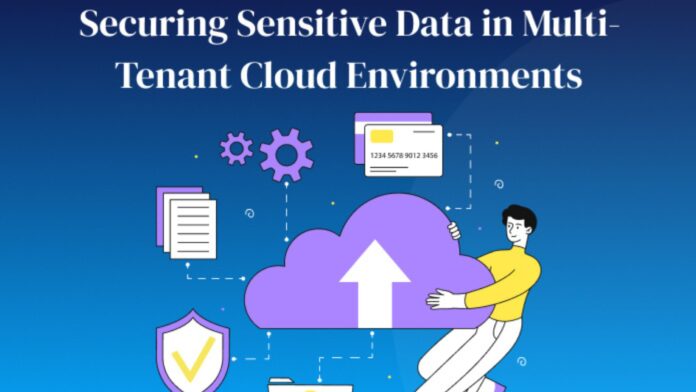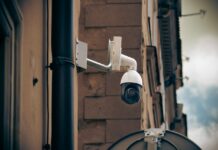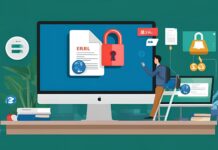The cloud is like a giant apartment building these days, right? Many different companies are setting up shops there because it’s often cheaper and way more flexible than having dedicated servers.
This setup is a multi-tenant cloud environment where multiple companies share the same underlying hardware. While it’s super convenient and offers excellent cost benefits of cloud computing, it also raises a fundamental question: How do you keep your sensitive stuff safe when you’re sharing the building with everyone else?
In my years in tech, I’ve seen this question come up time and time again. People get a little nervous about their Sensitive Data Protection when they know their data is on the same servers as hundreds of other companies. It’s a valid worry!
So, let’s explore what this multi-tenant cloud environment means and, more importantly, what we can do to ensure that our data is protected.
What’s the Deal with Multi-Tenancy Anyway?
So, imagine that big office building again. You’ve got different companies renting out different suites, but they’re all using the same basic infrastructure – the same power grid, internet connection, and maybe even the same cleaning crew. That’s a pretty good analogy for a multi-tenant cloud environment. Your company and many others are all using the same servers and network equipment the cloud company provides. That’s a multi-tenancy example in cloud computing.
Now, this is different from a multi-tenant vs. single-tenant setup. Think of single-tenancy as having your own entire office building—you don’t share anything with anyone. While some companies prefer that feeling of complete isolation, it often comes with a bigger price tag. That’s why the multi-tenant cloud environment is so popular—it helps keep those cost benefits of cloud computing attractive for businesses of all sizes.
You might see a multi-tenant architecture example in a popular online software service. Many different companies use the same software platform, but their individual data and settings are kept separate and secure.
The Security Question: Are We All Just Hoping for the Best?
Okay, let’s get to the heart of the matter: With all this sharing going on, how can we be sure about data security in the Cloud? It’s a totally reasonable question. While the big cloud providers put a ton of effort into security, the fact is that you’re in a shared space, and that brings its own set of cloud computing risks and benefits. We need to focus on that Sensitive Data Protection aspect.
That’s where understanding the different types of data security in cloud computing comes into play. It’s not just one thing; it’s a bunch of various strategies and technologies that work together to keep your data safe in a multi-tenant cloud environment.
Building a Digital Fortress: Key Security Measures
When we discuss the aspects of data security in cloud computing, we’re taking a layered approach, like building a secure building.
- First, you have to control who can access your data in the cloud—that’s access control. Ensure only the right people in your company can access it.
- Then, you’ve got to think about what happens if someone does get in. That’s where encryption comes in—scrambling your data so it’s unreadable to anyone who shouldn’t see it. This is a crucial technology for data security in cloud computing.
- We also need to think about stopping data from accidentally walking out the door—that’s data loss prevention (DLP). We should have systems in place to monitor and control sensitive information. And let’s not forget the importance of regularly checking the locks and security cameras—that’s auditing in cloud computing.
The Smart Way to Stay Safe: Best Practices
So, what are some of the best practices for cloud security when you’re in a multi-tenant cloud environment? Here are a few things that I always tell companies to focus on:
- Lock Down Access: Use strong passwords, and for goodness’ sake, turn on multi-factor authentication! Also, follow the principle of least privilege—only give people the absolute minimum access they need to do their jobs.
- Encrypt Everything Important: Seriously, encrypt your sensitive data when it’s sitting in the cloud (“at rest”) and when it’s moving around (“in transit”). This is a fundamental technology for data security in cloud computing.
- Watch for Data Leaks: Implement DLP tools and set up policies to monitor your sensitive information and prevent it from going where it shouldn’t.
- Keep Checking Your Security: Regular auditing is crucial in cloud computing. You need to ensure that your security measures are actually working and that there aren’t any holes.
- Know the Rules: If you have customers in Europe, understand and follow the relevant regulations, like AWS GDPR compliance. Cloud providers often have tools to help with this, so take advantage of them.
- Secure Your Network: Don’t forget about firewalls and other tech security measures to protect your cloud resources.
- Stay Updated: Regularly scan your cloud environment for known weaknesses and apply security updates promptly.
These best practices for cloud security are the foundation for strong Sensitive Data Protection in a multi-tenant cloud environment.
The Tech Tools: What Can You Use?
The good news is that there are many really good technologies for data security in cloud computing that can help you out. We already talked about encryption, which is a big one, but there are others, too.
Security Information and Event Management (SIEM) systems can help you monitor your cloud environment and spot suspicious activity. Cloud Access Security Brokers (CASBs) are like security guards who sit between your users and the cloud services they’re using, giving you more control and visibility.
Then, you’ve got techniques like tokenization and data masking, which can replace your actual sensitive data with fake data for specific uses. While using blockchain for security in this area might still be a bit cutting-edge, it’s something to keep an eye on as a potential future technology for data security in cloud computing.
Getting the Experts In: The Value of Cloud Consulting
All this can feel like a lot to handle, especially if you’re not a security expert. That’s where cloud consulting services can be a real lifesaver. They have the knowledge and experience to help you figure out the best way to secure your multi-tenant cloud environment. They can help you identify your most significant risks, put the proper best practices for cloud security in place, and choose the right technologies for data security in cloud computing for your specific needs. Think of them as your experienced guides in the sometimes-confusing world of cloud security.
How it Works: A Simple Example
To give you a better idea of how it all fits together, let’s consider that email service again as a multi-tenant architecture example. Each user’s emails are stored in their own separate “container” or logical space.
The email service uses things like encryption to scramble your emails so nobody else can read them, and it has strict rules about who can access what data. That’s a basic example of managing isolation and security in a multi-tenant cloud environment.
➢ Building Securely from the Start
If you’re a company building software that other companies will use in the cloud, you really need to consider how to implement multi-tenant architecture with security as a top priority right from the beginning. This means designing your systems with strong isolation and security controls at every level.
➢ A Quick Note on Serverless
While we’re on the topic of cloud, I wanted to mention serverless computing vs cloud computing quickly. Even though serverless technologies like AWS Lambda or Azure Functions feel different, they still run on cloud infrastructure, and the same principles of securing sensitive data in a multi-tenant cloud environment still apply. You still need to think about things like access control and encryption.
➢ Balancing the Books: Cost and Security
We talked about the cost benefits of cloud computing earlier, and that’s a big draw for many companies. But it’s crucial that you don’t sacrifice security just to save a few bucks. Finding the right balance between cost-effectiveness and really strong Data Security in the Cloud is key.
Choosing Your Cloud Partner Wisely
When you’re picking a cloud provider, whether it’s AWS vs. Azure vs. GCP, you need to look closely at what they offer regarding security. All three big players invest heavily in security and offer a wide range of tools and services to help you protect your data in a multi-tenant cloud environment. Make sure you understand their specific security features and what kind of compliance certifications they have.
Wrap Up!
Keeping your sensitive data secure in a multi-tenant cloud environment is doable but takes planning and effort. By understanding what multi-tenancy in a cloud computing example looks like, implementing strong best practices for cloud security, and using the right technologies for data security in cloud computing, you can take advantage of the cost benefits of cloud computing without compromising your Sensitive Data Protection. It’s all about being aware of the cloud computing risks and benefits and making smart choices to keep your digital apartment safe and sound.





